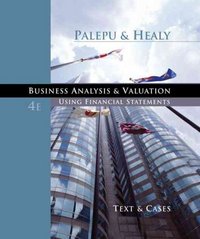Answered step by step
Verified Expert Solution
Question
1 Approved Answer
Consider a project of manufacturing and selling high - end smartwatches to wealthy customers. The length of the project is 1 0 years. The industry
Consider a project of manufacturing and selling highend smartwatches to wealthy customers. The length of the project is years. The industry demand for highend smartwatches next year will be million units, and every year it will either increase by with probability or decrease by with probability Your market share next year will be and every year it will either increase by point with probability or decrease by point with probability but your maximum capacity of annual production is watches per year. Ie if your market share would grow to a level which would require producing more than watches per year, it will be capped at the level corresponding to watches per year. Then, next year, it will again either increase by point or decrease by point, with the same capacity constraint being in effect. The initial cost of the project is $ million, which is used to purchase the equipment necessary to manufacture smartwatches. This initial cost is amortized over a year period using the straightline method. Every year, the annual inflation will be either with probability or with probability In the first year, fixed costs will be $ and every year they will increase by the inflation. In the first year, variable costs will be $ per unit, and every year they will increase by the inflation. If your market share drops to you abandon the project and sell your equipment for its book value or of its initial price whichever is higher At the end of the th year, you sell the equipment for of its initial price if you have not sold it earlier already The price at which you can sell the watches depends on the industrywide demand in that year a higher demand leads to a higher price Namely, the industry demand x where x is a random number taking a value in the interval
and it follows a uniform distribution ie it takes all value within the given interval with equal likelihood In any case, the unit price never drops below the actual variable costs per unit. Ie if the unit price would be lower than the variable costs per unit based on the above formula, then the unit price will be equal to the variable costs per unit. The corporate tax rate is Assume that every payment and cash flow happens at the end of the year.
Assume that the project is financed by equity only. Simulate a random outcome where you calculate the total cash flow of the project for each year from the st to the th year Then, simulate altogether such random outcomes. Then, calculate the expected cash flow for each year. Using these
please provide with excel file link
Step by Step Solution
There are 3 Steps involved in it
Step: 1

Get Instant Access to Expert-Tailored Solutions
See step-by-step solutions with expert insights and AI powered tools for academic success
Step: 2

Step: 3

Ace Your Homework with AI
Get the answers you need in no time with our AI-driven, step-by-step assistance
Get Started


